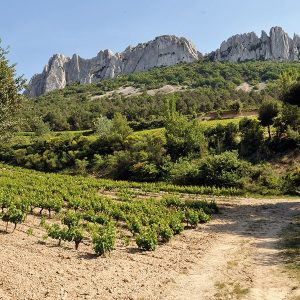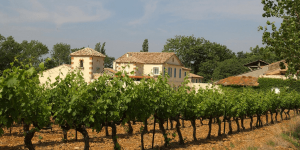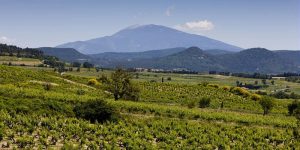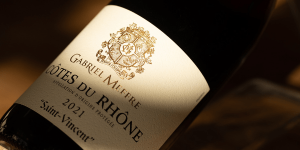Clairette – key grape of the future Gigondas white from Domaine de Longue Toque
A bit of history
Over the past few years, Clairette has seen a resurgence in popularity. But contrary to what you might believe, this is not a new grape variety in the Southern Rhône valley. It is actually a native variety. Viewed as the “Chardonnay of the south”, Clairette is a high-quality variety suited to this mineral-rich soil. In the 1950s, 10% of Gigondas production was Clairette. And in 1971, Gigondas earned its origin-controlled status… but only for red and rosé. The consequences were irreversible for white wines, and the Clairette plots were torn up.
Characteristics of Clairette
Nicolas Spéranza, manager of the estates, explains:
Clairette is sometimes described as a dull variety because it is not very aromatic. However, Clairette is the foundation of a wine, and gives it structure. With a grainy mouthfeel, it has a strong presence, which gives its structural personality to the wine.
Clairette has a low alcoholic and acidic profile, which balances and freshens wines from the Southern Rhône valley. Its acidity is also an advantage for maturing cellaring wine kept in barrels.
Véronique Torcolacci, our in-house wine expert, explains:
This is a lovely variety, which captures the minerality of the chalky soil in Gigondas, but which needs a few years to gather itself together.
Indeed, the Clairette vines are still young and don’t pick up this minerality as well, as opposed to the older vines. It would be wise to blend it with more aromatic varieties, which are able to absorb this stronger soil. Meanwhile, Clairette would go well with more aromatically imposing varieties such as Grenache Blanc, Roussanne or Marsanne.
Its cultivation specificities
In 2014, Maison Gabriel Meffre decided to do some analysis on its soil. With the help of Georges Truc, a wine geologist, 3 soil pits were dug, enabling analysis of the safres (sandy-marl) soil. This soil comprises a mixture of salt and clay, advantageous for regular water supply. It is shallow soil that produce large, juicy and acidic grapes, which are nicely suited for white wines.
Maison Gabriel Meffre chose then to plant Clairette between the mountain and the plateau. The grapes are on the Tessonnières zone, where the sea-originating sand is found, from the Miocene period, and the Montmirail zone, where you find slightly older lake-born sands, out of the Oligocene period, which are the identifying features of Domaine de Longue Toque.
On pruning technique, Nicolas, the estates manager, says “we have opted for the goblet method to protect the grapes from wind and sun.”
The goblet cut is short, without training (this consists of guiding the vine on a structure and attaching young shoots to it). The grapes are kept on the inside of the leaves, which keeps the bunches out of the sun, like a parasol. The goal is to avoid overmaturing or early maturing, which would make the grape too sugary and therefore too alcoholic. As a result of this pruning technique, the grapes are picked by hand, early in the morning, to keep their freshness and quality.
Organoleptic identity and wine-making process
Clairette is a variety all about freshness. On tasting it, the grape produces aromas of citrus and fresh flowers. For some vintages, such as 2021, you can get a fleeting sensation of exotic fruits in Clairette. To capture this subtle moment and reproduce it in the wine, the grapes must be harvested at the right moment, and so they must be tasted regularly.
The produce of Maison Gabriel Meffre display quite particular menthol notes. To create this extra freshness, the stems, which are still quite green, go into the press with the grapes.
Clairette needs no particular yeast. It’s because of these neutral yeasts that the grape can express itself, releasing a lemony flavour in the process. Fermentation starts in vats, then Clairette is barrelled in 2 or 3 year-old ‘demi-muid’ barrels. Over time, the wood effect disappears, with the objective being to increase the structuring effect of the grape without tainting it with wood. One part of Clairette continues its life in a 4-year-old barrel to bring out toasted notes.
Finally, to support the beautiful acidic profiles unique to Clairette, the wine is stirred up during maturation: the barrels are shaken so nothing gathers at the bottom. This agitation encourages the fine sediment to coat the wine. The lemony acidity then disappears, ceding to a menthol freshness.
Food and wine pairing
Blended with Marsanne and Roussane, Clairette provides substance and fresh sensation to the blend. Véronique Torcolacci reminds us that it is a lively variety, which would go well with rich and decadent dishes. Semi-cooked foie gras, creamy goat’s cheese or a meat stew would be a perfect way to taste this wine in its element.
Stakes riding on this grape variety
As a native variety, Clairette is a cornerstone in the application for the Gigondas appellation for white wines. For 10 years, Gigondas producers and négociants have been leading a collective effort to bring this request for recognition to the INAO. Etienne Maffre, CEO of Maison Gabriel Meffre, is involved in the effort alongside Louis Barriol, Pierre Amadieu, and InterRhone. It is a collective project creating the application but also on the ground because to qualify for the Gigondas white appellation, 70% of the grapes in the region must be Clairette. Once the application is sent, an analysis board visits the location to ensure that the Gigondas region is fulfilling the criteria in the specification.
Etienne Maffre recounts:
The stakes are high for Maison Gabriel Meffre because it’s about creating a project that is at the heart of the Gigondas identity and creating an origin-controlled white wine that can go head to head with other quality wines of its type in the Rhône Valley such as Condrieu, Crozes-Hermitage and Châteauneuf-du-Pape. To be able to offer this wine now, Maison Gabriel Meffre started small scale trials a decade ago, and the results have been conclusive.
If the whole Gigondas white appellation process goes as planned, Clairette will enjoy a privileged position! See you in 2023 to try the Gigondas white from Domaine de Longue Toque, a vintage that we hope will be fresh and very mineral, which is characteristic of this very unique land!
Rubrics
Découvrez plus d'articles...
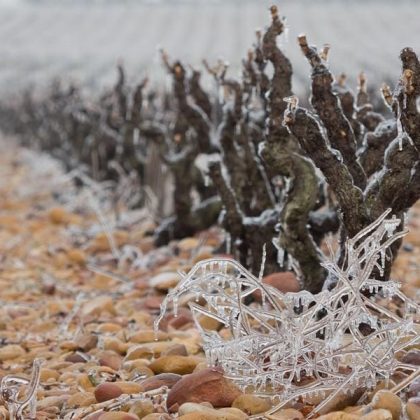
The vineyard and wine cellar in winter
What happens in the world of wine during the winter period? After the hustle and bustle of autumn, the harvests and vinification process, comes winter, a season devoted to maturation and looking after the vines.

In 2018, we will continue to strive to be a Responsible Company!
In this new year, our wish to help build a world that respects both mankind and the environment is as strong as ever. This can be seen through the number of our projects for 2018 that are closely related to our convictions as a Responsible Winery. We’re delighted to be given the opportunity to tell you about them!

Discovering the art of pairing wine and chocolate
A morsel of white chocolate, Black Forest gâteau, pieces of stem ginger wrapped in chocolate, or Mexican chicken in chocolate sauce—all very appetising, but which wine would you serve with each one? Food and wine pairings factor in a combination of elements, such as the terroir, our powers of concentration, the circumstances of the tasting session, our sense memory and more. We guide you through some of the basic principles of this fascinating world!
